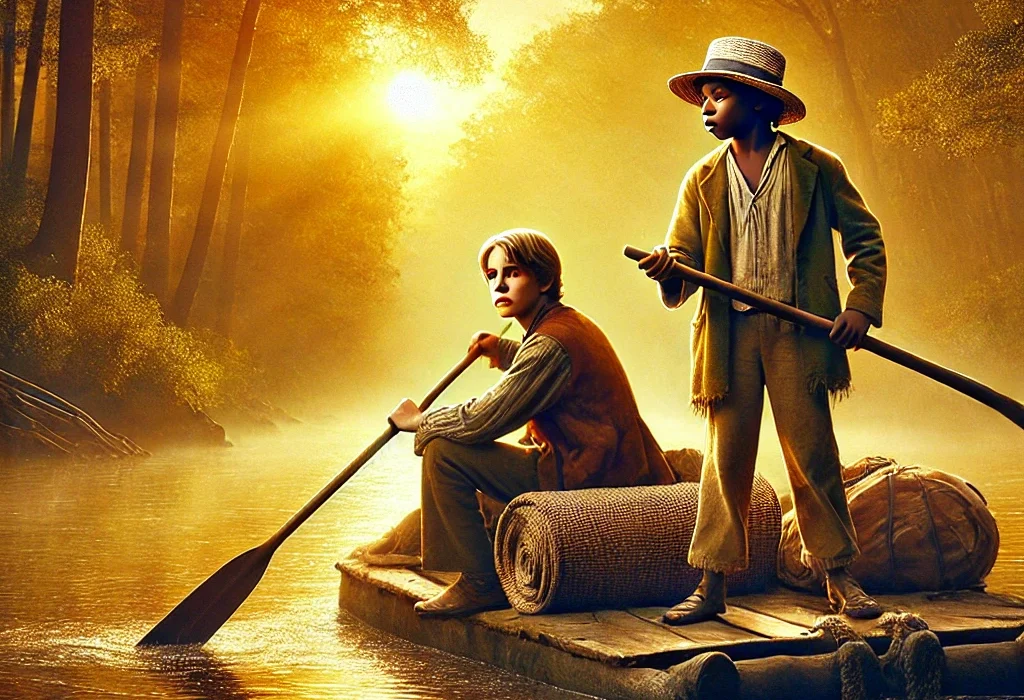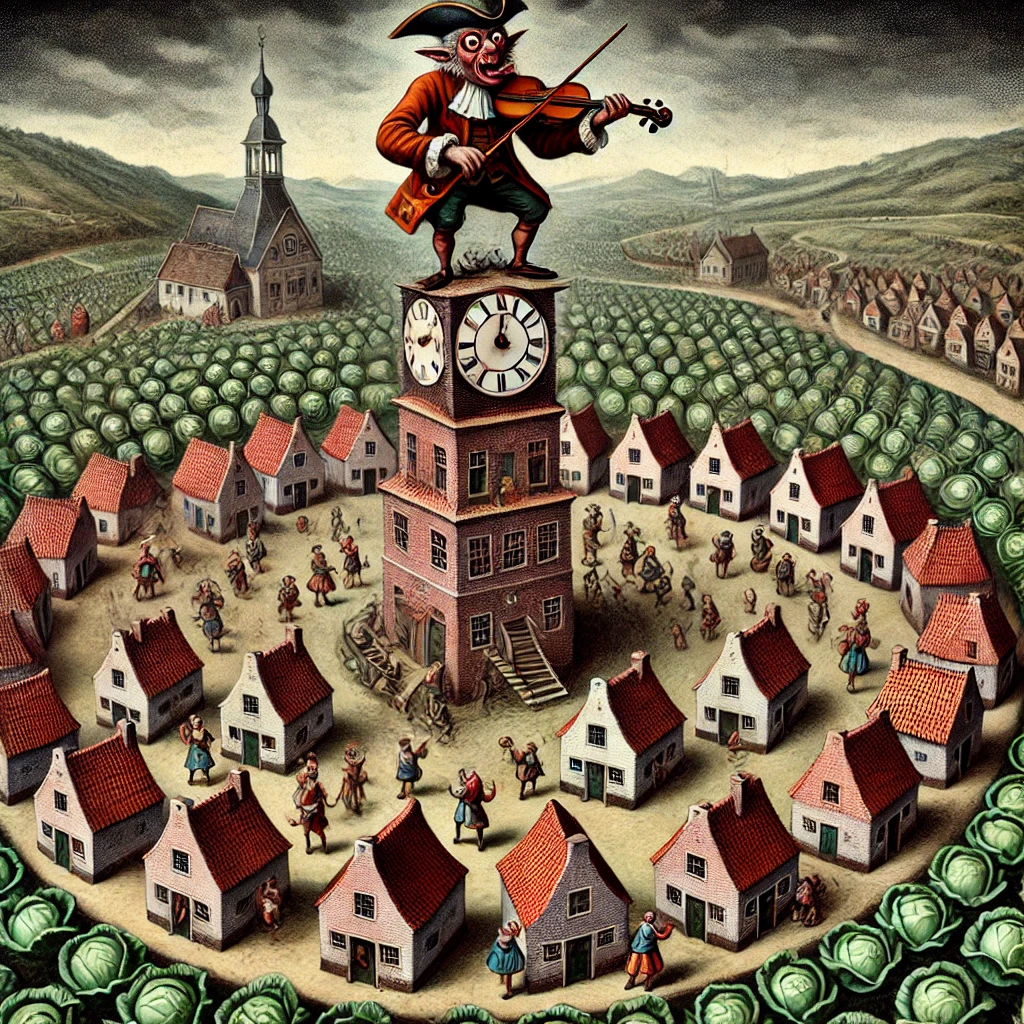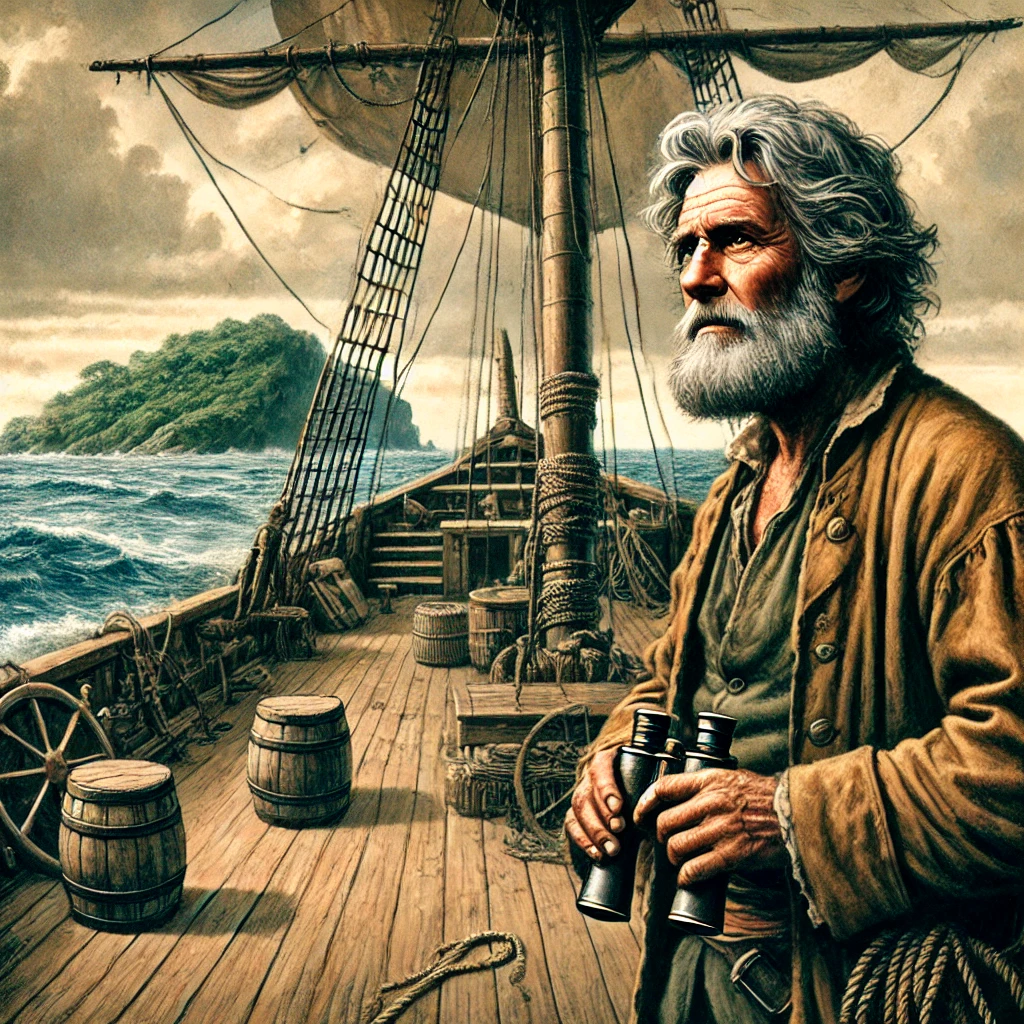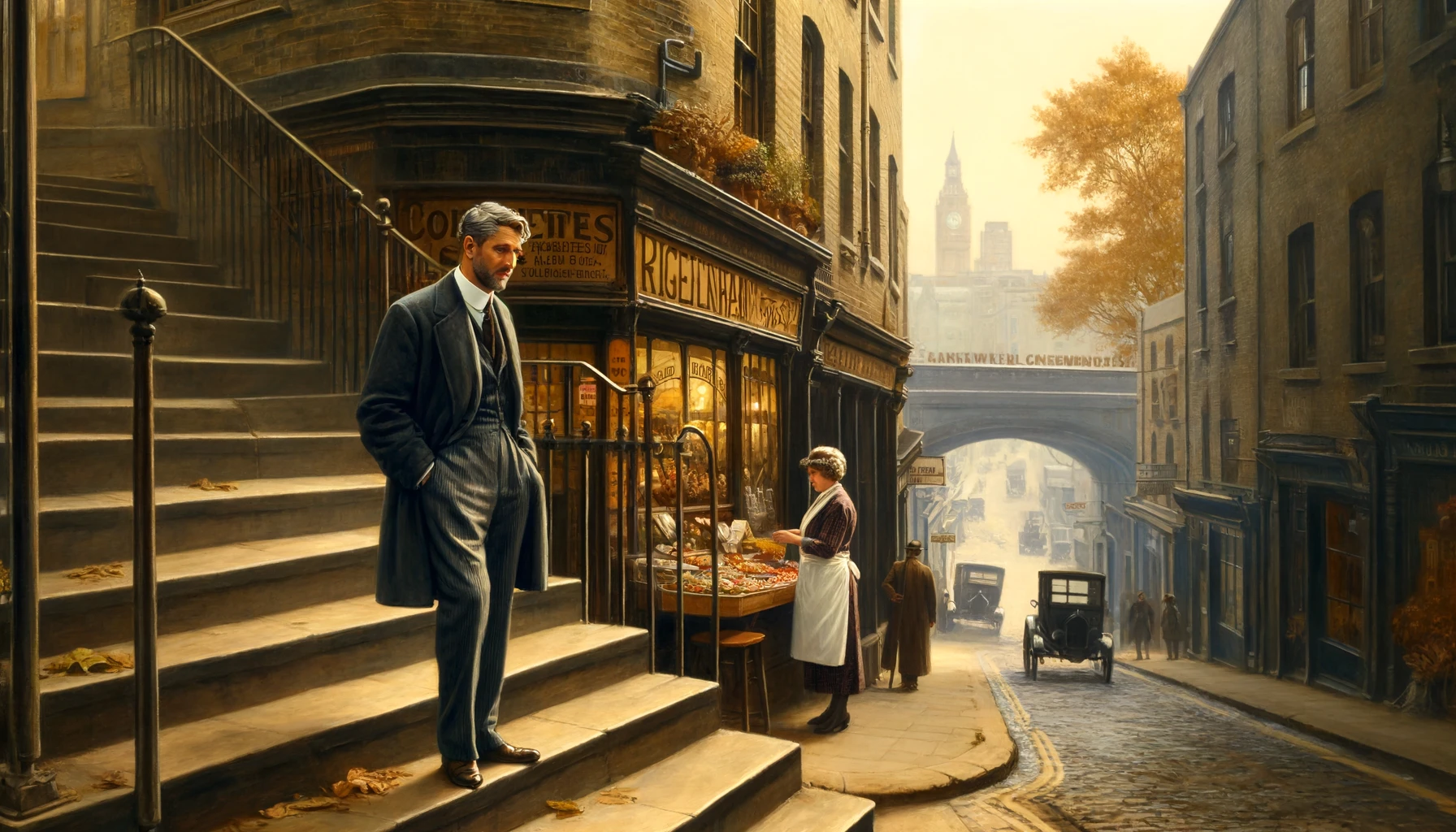The Adventures of Huckleberry Finn by Mark Twain is a seminal work of American literature, widely regarded as one of the greatest American novels. Published in 1885, this story follows a young boy named Huck Finn as he embarks on a journey down the Mississippi River, exploring themes of friendship, freedom, and the stark social issues of the time, particularly racism and slavery. Twain uses Huck’s adventures as a vehicle for his incisive satire of Southern antebellum society, making this both an entertaining and thought-provoking read.
Plot Summary
Huckleberry Finn never liked the idea of being “civilized.” Living with the Widow Douglas and her strict sister, Miss Watson, wasn’t the life for him. They tried to tame him with proper clothes, prayers, and schooling, but Huck craved the wild freedom of the woods and rivers. After being taken in by the widow following his adventures with Tom Sawyer, Huck briefly returned to a civilized life. But things took a grim turn when his abusive father, Pap Finn, reappeared.
Pap, a violent drunk, was enraged by Huck’s education and attempts at self-betterment. He wanted Huck’s money— the small fortune Huck and Tom found during their earlier escapades. Despite Huck’s attempts to resist, Pap kidnapped him and took him to a remote cabin in the woods, far from civilization. There, Huck endured beatings and confinement, but his independent spirit couldn’t be broken. He devised a clever plan to escape by faking his own death, making it look as though he had been killed, and fled down the river in a stolen canoe.
Huck’s newfound freedom came with unexpected companionship when he encountered Jim, Miss Watson’s runaway slave. Jim had overheard that he was going to be sold, and his escape was an act of desperation to find freedom for himself and his family. The two decided to travel together on a raft down the Mississippi River, seeking safety in the unknown, where Jim might find true freedom.
As they drifted down the river, Huck and Jim formed a close bond. Huck was torn, though. The beliefs he had been taught clashed with his growing affection for Jim. Huck wrestled with his conscience, thinking it was his duty to turn Jim in, but each time he got close, his sense of friendship overpowered the racist norms of his upbringing. Their journey was a mix of tranquil days floating on the river and tense encounters with the people and dangers they met along the way.
One such encounter came when they crossed paths with two swindlers—the “Duke” and the “King”—who took control of the raft and forced Huck and Jim into helping with their schemes. These men pretended to be European royalty and tricked townsfolk into giving them money through various fraudulent activities. Huck quickly saw through their lies, but they were powerless to escape the Duke and the King’s control. The situation became even more dangerous when the conmen devised a plan to sell Jim, returning him to slavery for their own profit. This betrayal pushed Huck to a breaking point.
Desperate and determined, Huck set out to rescue Jim. He decided to write a letter to Miss Watson, revealing Jim’s location, but something inside him wouldn’t allow it. Huck’s internal struggle peaked as he decided, in a moment of moral clarity, that he would rather go to hell than betray Jim. He tore up the letter and resolved to help Jim, no matter the consequences.
Meanwhile, Tom Sawyer reentered Huck’s life when Huck arrived at the Phelps farm, where Jim was being held. In a twist of fate, the Phelps family turned out to be Tom’s relatives, and they mistook Huck for Tom. Rather than clarify the mistake, Huck played along, allowing Tom to join in on the rescue plan. However, Tom turned what could have been a simple escape into an elaborate, convoluted scheme, filled with unnecessary theatrics. Huck went along with Tom’s wild plans, even though he knew there were easier ways to free Jim. Tom’s insistence on following the adventure as though they were living out one of his favorite books put Jim at greater risk, but Huck was too loyal to his friend to abandon him.
In the end, their plan went awry, and Tom was shot in the leg during the escape. Despite the chaos, Jim stayed behind to help Tom, risking his own freedom to save a boy’s life. This act of bravery led to Jim being captured once again. However, Tom revealed an astonishing secret—Jim had been free all along. Miss Watson had died and freed Jim in her will, but Tom, in his love for adventure, had chosen to keep this information hidden to make the rescue more thrilling.
With Jim’s freedom now official, Huck faced a new challenge—his father, Pap. Huck discovered that his father had died earlier in their journey, and with that news, any lingering fear of being returned to his old life was gone. Jim’s future was secured, and Huck could finally be free in his own way. However, the idea of returning to the civilized life still didn’t appeal to Huck. When Aunt Sally, Tom’s aunt, offered to adopt him and continue his education, Huck declined. He had no interest in becoming “sivilized” again. He decided he would head out west, seeking the untamed freedom he had always longed for, far from the constraints of society.
With Huck determined to follow his own path, the story ends as it began—with a boy determined to live life on his own terms, rejecting the norms of civilization in favor of the open road ahead.
Main Characters
- Huckleberry Finn (Huck): The protagonist of the novel, Huck is a free-spirited, rebellious boy who resists the attempts of the widow and Miss Watson to “civilize” him. His adventures form the core of the novel, and his moral growth is one of its major themes.
- Jim: A runaway slave who becomes Huck’s loyal friend and companion during their journey down the river. Jim is depicted with depth and humanity, challenging the racial stereotypes of his time.
- Tom Sawyer: Huck’s best friend, a boy with a wild imagination, who represents societal norms Huck eventually comes to question.
- Pap Finn: Huck’s abusive, alcoholic father, whose neglect and cruelty drive Huck to escape from home.
Theme
- Freedom vs. Civilization: Huck’s flight down the river represents a quest for freedom, not just from his father but from the “civilized” life imposed by society. His companion, Jim, also seeks freedom from slavery, adding complexity to the theme of liberty.
- Friendship and Loyalty: The bond between Huck and Jim is central to the story. Their evolving relationship challenges societal norms, as Huck comes to see Jim as a friend and equal, despite the racial prejudices of the time.
- Racism and Slavery: Twain’s novel explores the ingrained racism of American society. Jim’s struggles and Huck’s evolving conscience force readers to confront the moral contradictions of slavery.
- Moral Growth and Conflict: Huck wrestles with his conscience throughout the novel, often torn between the values he has been taught and his instinctive sense of right and wrong. His decision to help Jim, despite believing it is wrong by societal standards, marks his moral awakening.
Writing Style and Tone
Mark Twain’s writing in The Adventures of Huckleberry Finn is celebrated for its rich use of vernacular language, particularly the varied dialects of the American South. Twain’s careful attention to speech patterns brings authenticity to his characters and settings, giving readers a vivid picture of the region’s culture. This use of dialect was groundbreaking at the time and contributes to the novel’s lasting appeal, making the characters more relatable and real.
Twain’s tone fluctuates between humorous and serious. His humor often has a satirical edge, poking fun at the absurdities of society. At the same time, the novel doesn’t shy away from tackling serious issues, such as slavery and racism, in an unflinching and often somber manner. The shifts in tone—from Huck’s boyish mischief to his deep reflections on freedom and justice—are what make the novel both entertaining and profound.
We hope this summary has sparked your interest and would appreciate you following Celsius 233 on social media:
There’s a treasure trove of other fascinating book summaries waiting for you. Check out our collection of stories that inspire, thrill, and provoke thought, just like this one by checking out the Book Shelf or the Library
Remember, while our summaries capture the essence, they can never replace the full experience of reading the book. If this summary intrigued you, consider diving into the complete story – buy the book and immerse yourself in the author’s original work.
If you want to request a book summary, click here.
When Saurabh is not working/watching football/reading books/traveling, you can reach him via Twitter/X, LinkedIn, or Threads
Restart reading!








